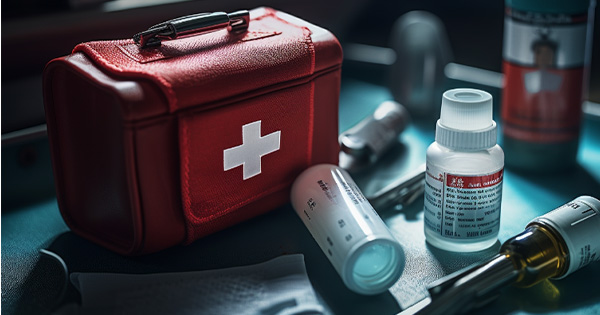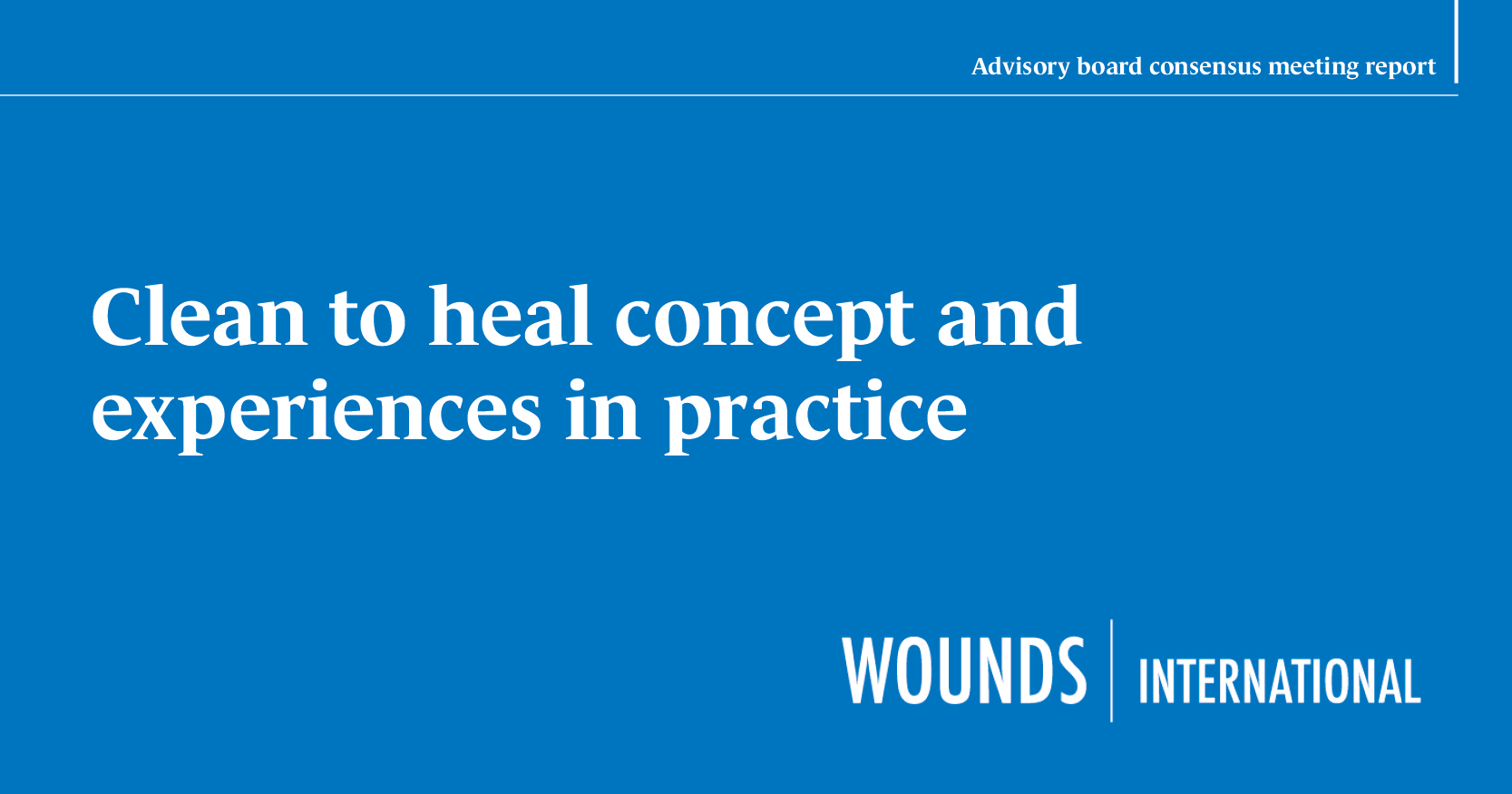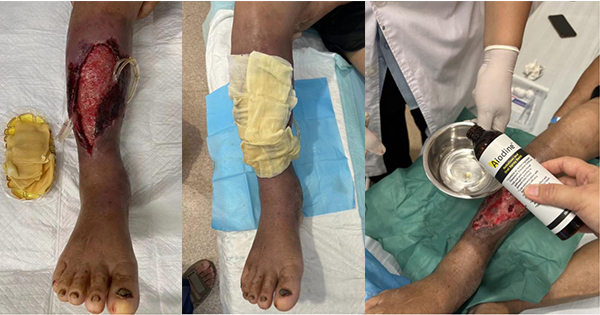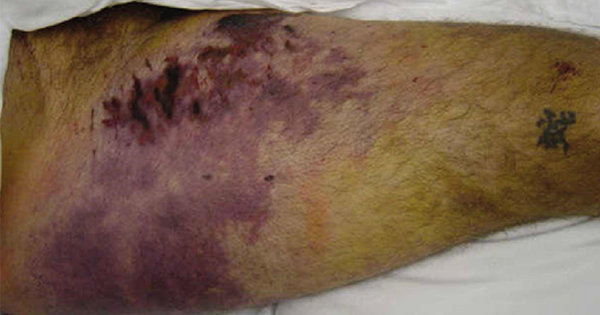- Just because you can, doesn’t mean you should
As the tip states, medications you may classify as beneficial may not be appropriate for each patient. We will be discussing medications that have been shown to improve wound healing. However, any medication addition needs to be critically analysed for its risk-benefit ratio, polypharmacy and social determinants of health. The risk-benefit ratio is a patient-specific evaluation of the benefits and harms to identify where each weighs stronger and helps evaluate the ethical principles of beneficence and non-maleficence.
Polypharmacy is the syndrome occurring with five or more medications and the synergistic effects of multiple medications, most often in the negative regard. Polypharmacy was recognised in the 1800s when people were taking multiple and excessive drugs. Its definition has since changed to unnecessary drugs and medications without indications (Varghese et al, 2023).
Medications will not help when people cannot meet basic physiological needs for wound healing. We, as providers, do not heal the body: the body heals itself. Therefore, it is more important to identify both internal and external barriers to wound healing, rather than just adding a new medication. Further, medications cost money, and we need to ensure the patient takes their crucial medications rather than spending limited resources on supplements.
2. Improve, or even optimise, nutrition
Hippocrates is credited as saying, “let food by thy medicine and medicine be thy food”. Glucose provides energy for wound healing. Fatty acids are essential for cell structure and have a key role in the inflammatory process. Protein is used for cellular repair and tissue growth.
Sometimes saying to improve nutrition seems too easy, but the number of malnourished patients in the hospital is astounding. Most clinicians wait for 5 days before beginning any kind of diet or dietary supplement in hospitalised patients. While there are circumstances when feeding the patient is contraindicated, these are most often found in intensive care units and are not prolonged periods of time.
A more common issue is how to get a patient to eat. Hospital food is seldom what patients eat at home and the provider should query that patient about preferred foods, having the family bringing in those foods if anorexia is an issue. Additionally, when acutely ill, many people resort to “comfort food” or food they have eaten previously in their life when they were ill. Many times, comfort foods are high in calories and sugar or carbohydrates (Spence, 2017). Encouraging a well-balanced diet while acutely ill makes sense; it may be inconsistent with individual patient preferences.
When discussing nutrition, it is easy to recognise our acutely ill patients are at risk for malnutrition. However, we tend to forget about chronic wound patients; they also have malnutrition. Patients with chronic ulcers have significantly higher levels of protein deficiency and micronutrient deficiencies. Chronic inflammatory syndromes are likely the problem (Grada and Phillips, 2022).
It is not always clear if malnutrition contributed to the wound development, wound stagnation, or if the wound healing process has consumed more nutrients than what is readily available, creating a new malnutrition.
3. Increase nitric oxide in the wound
People with diabetes have a known abnormal production of nitric oxide, which has been linked to impaired wound healing and development of chronic wounds (Malone-Povolny et al, 2019). Increasing the supply of oxygen, growth factors and other nutrients to the diabetic wound is imperative to accelerate healing.
Nitric oxide (NO) is a particularly important signalling molecule that dilates vessels. NO produced inside the cells by endothelial nitric oxide synthase (eNOS) naturally aids wound healing through its beneficial vasculogenic effects. Nitric oxide also promotes angiogenesis and kills bacteria. (Malone-Povolny et al, 2019). The problem has been how to deliver it to the wound. Today, we have three methods.
Topical nitric oxide is placed into hydrogel dressings with improved healing (Ahmed et al, 2022). Other biomaterials are being developed. L-arginine is an over-the-counter nitric oxide precursor. It is a vasodilator that is frequently used for heart conditions and erectile dysfunction. Arginine also is available as a supplement. Any form of arginine and its metabolites have powerful wound healing properties via metabolism and NO synthesis. High-level evidence supports the use of high-protein, high-calorie supplements enriched with arginine and other antioxidants to promote wound healing (Chu and Delmore, 2021).
4. Deliver oxygen to the wound
Many chronic wounds are ischemic and while the value of oxygen is well known, delivering oxygen to the tissues is often problematic. Hyperbaric oxygen solves the hypoxic problem, but it is not readily available, and does carry risk and a cost burden. Topical oxygen is an important option. It is diffused onto a clean, moist wound by diffusion, like the pulmonary process of diffusion.
In one animal study, topical oxygen increased oxygen levels in the wound bed when supplied at normobaric pressures (slightly above atmospheric, not hyperbaric). In the animal model, the pO was measured using an implanted probe at a depth of 2 mm in the centre of the wound bed. The pO was less than 10 mmHg with air above the wound (21% oxygen) and increased over fourfold to 40 mmHg in 4 minutes upon topical application of pure oxygen. Multiple studies show that oxygen applied directly to wounds resulted in accelerated closure of the wound, either in comparison to the history of the wound on the same patient or in comparison to another standard of wound care therapy (Fries et al, 2005).
5. Keep eating citrus fruit
Vitamin C, or ascorbic acid, is a water-soluble vitamin found in the diet which is essential for life in humans. Humans cannot synthesise it, so it must be consumed. Over the decades, the role of vitamin C has never been questioned. But whether it needs to be supplemented has been challenged.
Ascorbic acid, or vitamin C, is involved in all phases of wound healing. In the inflammatory phase, it contributes to neutrophil destruction. During proliferation phase, ascorbic acid aids synthesis, maturation, secretion and degrading of collagen. When a person is lacking ascorbic acid, they have difficulty producing collagen and scar tissue (Bechara et al, 2022). Notably, synthetic and food-derived ascorbic acid are equally bioavailable, it is preferred to ingest vitamin C as part of whole food for the additional micro and macronutrients and other phytochemicals (Carr and Vissers, 2013).
A systematic review of the role of vitamin C was inconclusive about whether it should be supplemented beyond a balanced diet (Bechara et al, 2022). Hence, our recommendation is to keep eating citrus. If the patient is not eating, consider supplementation. Be aware that grapefruit can interact negatively with several medications, due to the same metabolic pathway (CYP 450 3A4). They are nicely reviewed in a recent paper by Vuong et al (2023).
6. Supplement zinc in injured patients
Zinc is a trace mineral, with only two to three grams in an adult. Zinc is necessary for cell division, cell growth, wound healing, breakdown of carbohydrates, enhancing insulin and is needed for taste and smell (Rabinovich and Smadi, 2023).
Notably, severe zinc deficiency is rare in developed countries, but is very common in developing countries. Zinc deficiency is linked to delayed wound healing and low serum zinc levels are reported in critically ill patients with severe burns and those with pressure ulcers. Those patients with severe injury lose zinc through injured tissue and heal more rapidly with supplementation of zinc (Lin et al, 2018).
Zinc reduces the amount of copper the body can absorb and high doses of zinc can cause a copper deficiency. Copper supplementation should be considered if supplemental zinc is taken for a long time.
7. Phenytoin can aid healing of many types of wounds and reduce pain
Phenytoin is an anticonvulsant used for the management and treatment of epilepsy, generalised tonic-clonic seizures, complex partial seizures and status epilepticus. It works by blocking the voltage-dependent membrane sodium channels responsible for action potentials. This action prevents the positive feedback that promotes high-frequency firing, preventing seizure focal point (Gupta and Tripp, 2023).
A Cochrane review suggested topical phenytoin may help in the pressure ulcer healing and has been known to reduce pain and improve healing in numerous types of wounds, such as traumatic, other ulcers and burns (Hao et al, 2017).
There is also evidence that phenytoin increases collagen deposition, neovascularization, and fibroblast proliferation, which accelerates wound healing. There are unclear mechanisms that lead to a direct antibacterial effect and improved circulation and effect on wound pH (O’Sahil Sadiq et al 2024).
8. Chamomile and pomegranate are antioxidants
Chamomile flowers have been shown to have anti-inflammatory properties, antioxidant, and antimicrobial effects. Pomegranate flowers have been shown to have high antioxidant properties due to their high content of phytochemicals. Topical chamomile has been shown to have significant efficacy in treating numerous skin impairments, such as sunburn, contact dermatitis, phlebitis, atopic eczema, radiodermatitis and wound healing (Niknam et al, 2021). One study found the best results for wound closure were seen seven days after the wound was started, so this may not be ideal or appropriate for chronic wounds (Niknam et al, 2021).
9. Curcumin is not just an Indian spice
Curcumin (turmeric) has been shown to possess significant anti-inflammatory, antioxidant, anti-carcinogenic, anti-mutagenic, anti-coagulant and anti-infective effects. Curcumin has also been shown to have significant wound-healing properties. Its anti-inflammatory effects came from the inhibition of tumour necrosis factor alpha (TNF-α) and interleukin-1 (IL-1). Curcumin also scavenges oxygen free radicals. Curcumin also enhanced granulation tissue production, fibroblast release and collagen production (Akbik et al, 2014; Vollono et al, 2019). Oral curcumin is not effective for wound healing, the material should be applied to the wound topically. Several technologies are being developed (Singh et al, 2024).
10. We will wait on oestrogen supplementation
Women are particularly at risk of age-associated pathology, spending increasing lengths of time in a post-menopausal state. Post-menopause physiological changes are particularly noticeable in the skin, which loses structural architecture and becomes prone to damage. Oestrogen deficiency is detrimental to many wound-healing processes, notably inflammation and re-granulation, while exogenous oestrogen treatment widely reverses these effects (Wilkinson and Hardman, 2017).
Oestrogen is known to improve vaginal wound healing. Additionally, the stages of wound repair in skin and vaginal tissue share common similarities. Comparable to skin healing, the proliferation and migration of local vaginal fibroblasts is coordinated with the local vaginal epithelial cells at the wound edges to ensure the process of granulation tissue formation and re-epithelialisation in the vaginal wound healing process (Shafaat et al, 2023). Animal models have shown the benefit of oestrogen supplementation in reversing wounds healing delays. We will wait for data in human skin healing, but it may not be far off.
Conclusion
All of these medications have been shown to benefit wound healing, but it is worth repeating: just because you can, doesn’t mean you should. Often, patients with chronic comorbidities have numerous medications. As clinicians, the goal is to do no harm, including unnecessary polypharmacy and medication burden. Also, these medication options require shared decision-making with the patient and/or caregiver to ensure the risk-benefit ratio is adequate and consistent with each person’s care goals.







